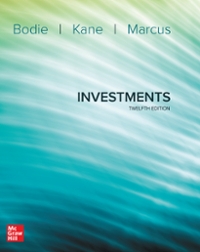Answered step by step
Verified Expert Solution
Question
1 Approved Answer
Lifelike, Inc. has sales of $585,000, costs of $273,000, depreciation expense of $71,000, interest expense of $38,000, and a tax rate of 35 percent. What
Lifelike, Inc. has sales of $585,000, costs of $273,000, depreciation expense of $71,000, interest expense of $38,000, and a tax rate of 35 percent. What is their net income? (Prepare an income statement using the format used in class.) What is the purpose of the income statement? (Points : 20) Question 2. 2. (TCO 1) Handler, Inc., has sales of $19,430, costs of $9,460, depreciation expense of $2,230, and interest expense of $1,620. If the tax rate is 35 percent, what is the operating cash flow, or OCF? (Show your calculations.) What does OCF measure? (Points : 20) Question 3. 3. (TCOs 2 and 3) Cee Co. issued 20-year, $1,000 bonds at a coupon rate of 7 percent. The bonds make annual payments. If the YTM on these bonds is 4 percent, what is the current bond price? (Show your calculations or explain the method you used.) What are two advantages of issuing bonds over issuing stock? (Points : 20) Question 4. 4. (TCO 3) Seventeenth Bank has an issue of preferred stock with $9.00 stated dividend that just sold for $60 per share. What is the banks cost of preferred stock? (Show your work and round your answer to two decimal places). Explain one advantage and one disadvantage of issuing preferred stock over common stock. (Points : 20) Question 5. 5. (TCOs 3 and 5) You own a portfolio that has $2,500 invested in Stock A and $3,500 invested in Stock B. If the expected returns on these stocks are 10 percent and 16 percent, respectively, what is the expected return on the portfolio? What does the term "portfolio weights" mean? Why are they important? (Show your work.) (Points : 20) Question 6. 6. (TCO 3) A stock has a beta of 1.25, the expected return on the market is 12 percent, and the risk-free rate is 2 percent. What must the expected return on this stock be? Define the term beta coefficient. Is it the same for all investments? Explain. (Show your work and express your percentage in two decimal places). (Points : 20) Question 7. 7. (TCO 4) Suppose Pat, Ltd. just issued a dividend of $2.40 per share on its common stock. The companys dividends have been growing at a rate of 5%. If the stock currently sells for $80.00, what is your best estimate of the companys cost of equity? Does the dividend growth model work for all companies? Explain. What would be used instead? (Show your work.) (Points : 20) Question 8. 8. (TCO 4) Given the following information, calculate the weighted average cost for the Ban Corp. Do you think Ban has the optimal capital structure? Explain. Percent of capital structure: Preferred stock 10% Common equity 70% Debt 20% Additional information: Corporate tax rate 34% Dividend, preferred $8.00 Dividend, expected common $4.00 Price, preferred $80.00 Growth rate 5% Bond yield 7% Price, common $80.00 (Points : 40) Question 9. 9. (TCO 7) What are some important factors to consider when conducting a credit evaluation and scoring? (Points : 20) Question 10. 10. (TCO 1) Provide three examples of situations in which business ethics play a role in the financial management process. Explain your rationale, and how these situations may affect the value of the firm. (Points : 20) Question 11. 11. (TCO 6) What is the difference between diversifiable and non-diversifiable risk? Give examples of each. (Points : 20)
Step by Step Solution
There are 3 Steps involved in it
Step: 1

Get Instant Access to Expert-Tailored Solutions
See step-by-step solutions with expert insights and AI powered tools for academic success
Step: 2

Step: 3

Ace Your Homework with AI
Get the answers you need in no time with our AI-driven, step-by-step assistance
Get Started


